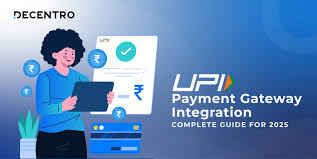Digital payments in India have undergone a seismic shift, and UPI is at the heart of this transformation. With over 172 billion UPI transactions recorded in 2024 alone, it’s clear that consumers prefer convenience, speed and trust, and UPI delivers on all fronts. As consumers move to UPI for everything from grocery shopping to EMIs, payment gateways must evolve.
The best Indian payment gateway today is defined not just by reliability but by how deeply and intelligently it integrates UPI. This blog examines why UPI is a strategic advantage and an essential component in solving customer payment challenges and driving business growth.
Why is legacy infrastructure holding businesses back?
Many businesses still rely on outdated payment systems that weren’t built for UPI’s speed, volume or expectations. These systems introduce friction, limit innovation and may drive customers away. Below are the core limitations that businesses face without modern UPI support.
- Lack of real-time processing
Legacy payment systems often depend on batch processing or delayed authentication methods. This results in a slower checkout process, especially for high-velocity platforms like e-commerce or food delivery. When customers have to wait for confirmation or retry failed payments, trust erodes and cart abandonment rises.
- Limited mobile compatibility
UPI is a mobile-first product, but older gateways often fail to deliver mobile-optimised checkout flows. Without smooth app-switch functionality to apps like PhonePe or Google Pay, users struggle with redirects or broken payment journeys. This leads to incomplete transactions, frustrated customers and loss of business.
- High failure rates during peak loads
Festive seasons, sales campaigns and payday spikes are golden opportunities for revenue. But without a scalable UPI infrastructure, many gateways slow down or crash under load. High transaction failure rates during peak hours can directly translate into lost sales and poor brand reputation.
- Inadequate reconciliation and reporting
Businesses that rely on manual or outdated reconciliation practices face serious delays in settling payments, tracking refunds or identifying failed transactions. UPI’s high volume nature demands real-time, transparent dashboards, something that legacy systems cannot provide.
- Poor support for new UPI features
With UPI evolving rapidly, introducing features like UPI Lite for small offline payments and AutoPay for automated debits, legacy systems often struggle to keep up. Without the timely adoption of new UPI functionalities, businesses miss out on reaching wider audiences and offering better experiences.
How does the best Indian payment gateway balance scale and customer experience?
To meet the modern demands of UPI-driven consumers, businesses need agile, secure and feature-rich infrastructure. This is where the best Indian payment gateway makes a difference by deeply integrating UPI capabilities into every layer of its offering.
- Built-in UPI architecture
The best Indian payment gateway doesn’t treat UPI as a plug-in. Instead, it is architected around UPI from the ground up. This means faster authentication, seamless merchant-bank communication and reduced latency. Every part of the payment flow is optimised to process high volumes with minimal downtime.
- App-switch and QR compatibility
To deliver frictionless user journeys, leading gateways ensure instant app-switching to UPI apps on both Android and iOS devices. They also support dynamic QR code generation, enabling one-click payments at PoS, on mobile or even via payment links. This empowers businesses to accept UPI in more versatile ways.
- High success rates across devices
Success rates on UPI are not just about uptime; they depend on how intelligently the payment flow is optimised. The best gateways track device types, OS versions and bank-level performance to route transactions via the best-performing rails. This data-driven approach ensures consistent reliability, even on low-end smartphones or patchy networks.
- Support for AutoPay and subscriptions
Recurring revenue models such as SaaS, OTT platforms or loan repayments rely on uninterrupted subscription billing. With built-in support for UPI AutoPay and e-mandates, the best Indian payment gateway enables businesses to collect recurring payments without re-authentication, offering customers convenience and businesses predictability.
- Real-time insights and smart retries
From dashboards that show payment drop-offs to APIs that provide actionable insights, modern payment gateways offer powerful analytics. In case of failed UPI payments, smart retry systems can automatically re-route the transaction, reducing the need for customer intervention and recovering lost revenue in real-time.
UPI unlocks access to underserved markets
UPI is a cultural shift in how users expect to pay. To meet this shift head-on, businesses need more than just compatibility; they need strategic alignment. The best Indian payment gateway understands UPI’s depth, offering scale, reliability and innovation at every touchpoint. From seamless mobile journeys to real-time analytics and subscription-ready features, it solves both merchant challenges and customer expectations.
As businesses look to expand their reach and improve conversions, UPI is essential. Platforms like Pine Labs Online lead the charge with UPI-first solutions, enabling companies to deliver fast, secure and intelligent payment experiences that are built for the digital India.
Source:
